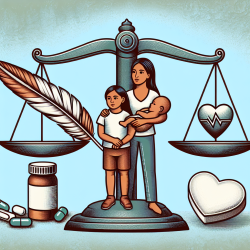As practitioners dedicated to the well-being of children, it's crucial to recognize the early signs of anxiety in school children with Additional Health and Developmental Needs (AHDN). Recent research, "Anxiety as a Common Biomarker for School Children With Additional Health and Developmental Needs Irrespective of Diagnosis," underscores the importance of identifying anxiety as a prevalent issue among these children, irrespective of their primary diagnosis.
The study examined children diagnosed with Autism Spectrum Disorder (ASD), Speech and Language Impairment, and other conditions, revealing that anxiety is a common thread affecting their overall well-being. Here are key takeaways for practitioners:
- Anxiety as a Common Experience: Children with AHDN exhibit higher levels of anxiety compared to their neurotypical peers. This anxiety often correlates with poorer sleep quality and more pronounced autism traits.
- Importance of Early Detection: Early identification of anxiety can pave the way for timely and targeted interventions. Practitioners should consider anxiety assessments as part of their routine evaluations.
- Interconnectedness of Symptoms: Anxiety, sleep disturbances, and autism traits are interconnected. Addressing one area may positively impact the others, leading to holistic improvements in a child's well-being.
By incorporating these findings into your practice, you can better support children with AHDN, providing them with the tools they need to thrive. Early intervention can make a significant difference, helping these children navigate their academic, social, and emotional challenges more effectively.
For those interested in delving deeper into this research, I highly encourage you to read the original paper: Anxiety as a Common Biomarker for School Children With Additional Health and Developmental Needs Irrespective of Diagnosis.










